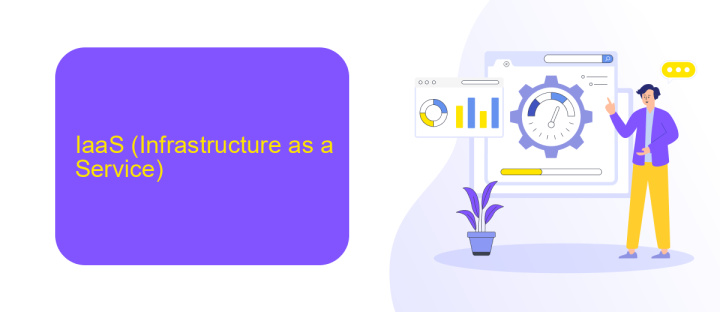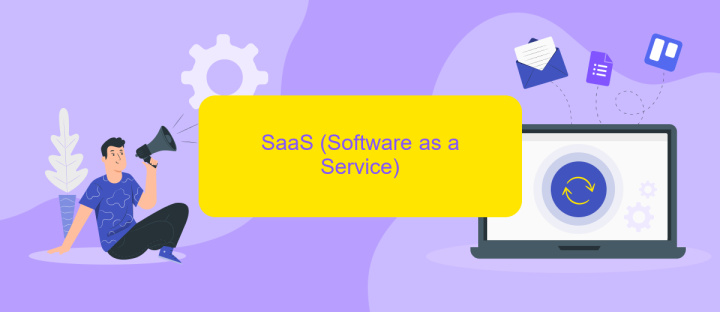iPaaS SaaS IaaS
In today's rapidly evolving technological landscape, understanding the distinctions between iPaaS (Integration Platform as a Service), SaaS (Software as a Service), and IaaS (Infrastructure as a Service) is crucial for businesses aiming to optimize their IT strategies. This article delves into the unique features, benefits, and use cases of each service model, helping organizations make informed decisions to enhance efficiency and scalability.
Introduction
In today's rapidly evolving digital landscape, businesses are increasingly relying on cloud-based solutions to streamline operations and enhance productivity. Three key models that have emerged as essential components of modern IT infrastructure are iPaaS (Integration Platform as a Service), SaaS (Software as a Service), and IaaS (Infrastructure as a Service). Each of these models offers unique benefits and capabilities, enabling organizations to optimize their workflows and scale efficiently.
- iPaaS: Facilitates seamless integration of disparate systems and applications, enabling data to flow smoothly across various platforms.
- SaaS: Provides access to software applications over the internet, eliminating the need for local installation and maintenance.
- IaaS: Offers virtualized computing resources over the internet, allowing businesses to scale their infrastructure on-demand.
One notable service in the iPaaS category is ApiX-Drive, which simplifies the integration process by connecting different applications and automating data transfers. This service allows businesses to save time and reduce errors, thereby enhancing overall efficiency. By leveraging these cloud-based models, companies can achieve greater flexibility and focus on their core competencies.
IaaS (Infrastructure as a Service)

Infrastructure as a Service (IaaS) provides businesses with virtualized computing resources over the internet. This includes virtual machines, storage, and networking capabilities, all managed by the IaaS provider. By leveraging IaaS, companies can avoid the expenses and complexities associated with purchasing and maintaining physical hardware. Instead, they can scale resources up or down based on their current needs, ensuring cost-efficiency and flexibility. This model is particularly beneficial for startups and growing enterprises that need to rapidly adjust their infrastructure without significant upfront investments.
One of the key advantages of IaaS is the ability to integrate seamlessly with various other services and applications. For example, services like ApiX-Drive can facilitate the integration of IaaS with other cloud-based solutions, automating workflows and enhancing productivity. ApiX-Drive allows users to connect different software applications and services without requiring extensive coding knowledge, making it easier to manage and synchronize data across platforms. This integration capability ensures that businesses can create a cohesive and efficient IT environment, tailored to their specific operational needs.
SaaS (Software as a Service)

Software as a Service (SaaS) is a cloud-based service where instead of downloading software on your desktop PC or business network to run and update, you instead access an application via an internet browser. This model allows for seamless updates, scalability, and accessibility from any device with an internet connection.
- Cost Efficiency: SaaS eliminates the need for physical hardware and reduces maintenance costs.
- Scalability: Easily scale your services up or down based on your needs.
- Accessibility: Access your software from anywhere, on any device.
- Automatic Updates: Receive the latest features and security updates without manual intervention.
One of the key advantages of SaaS is its ability to integrate with other software and services. For instance, ApiX-Drive offers a no-code solution for integrating various SaaS applications, making it easier for businesses to automate workflows and synchronize data across platforms. This enhances productivity and ensures that all your tools work together seamlessly.
iPaaS (Integration Platform as a Service)

Integration Platform as a Service (iPaaS) is a cloud-based solution designed to simplify and streamline the integration of different applications and data sources. By providing a unified platform, iPaaS allows businesses to connect disparate systems and automate workflows without the need for extensive coding or complex infrastructure.
One of the key benefits of iPaaS is its ability to facilitate real-time data synchronization and seamless communication between various software applications. This ensures that data is consistently up-to-date and accessible across all integrated systems, enhancing operational efficiency and decision-making processes.
- Automated data integration
- Real-time data synchronization
- Scalability and flexibility
- Reduced IT complexity
- Enhanced operational efficiency
Services like ApiX-Drive exemplify the capabilities of iPaaS by offering user-friendly tools for setting up integrations between a wide range of applications. With ApiX-Drive, businesses can easily automate data transfers and streamline workflows, reducing the need for manual data entry and minimizing the risk of errors. This not only saves time but also ensures that business processes run smoothly and efficiently.
Comparison and Conclusion
When comparing iPaaS, SaaS, and IaaS, it's crucial to understand their distinct functionalities and benefits. iPaaS (Integration Platform as a Service) focuses on simplifying and automating the integration of various applications and services, making it an ideal choice for businesses looking to streamline their workflows. SaaS (Software as a Service), on the other hand, delivers software applications over the internet, making them accessible from any device with an internet connection. IaaS (Infrastructure as a Service) provides virtualized computing resources over the internet, offering flexibility and scalability for businesses that need to manage and control their IT infrastructure.
In conclusion, the choice between iPaaS, SaaS, and IaaS depends on the specific needs and goals of a business. For seamless integration and automation of workflows, iPaaS platforms like ApiX-Drive can be highly beneficial. SaaS is perfect for organizations that require easy access to software applications without the hassle of maintenance. IaaS is suitable for those needing robust infrastructure management and scalability. Understanding these differences helps businesses make informed decisions and leverage the right technology to drive efficiency and growth.
FAQ
What is iPaaS?
What are the key benefits of using SaaS?
How does IaaS differ from traditional hosting?
Can iPaaS be used to automate workflows?
What are some common use cases for iPaaS?
Do you want to achieve your goals in business, career and life faster and better? Do it with ApiX-Drive – a tool that will remove a significant part of the routine from workflows and free up additional time to achieve your goals. Test the capabilities of Apix-Drive for free – see for yourself the effectiveness of the tool.

